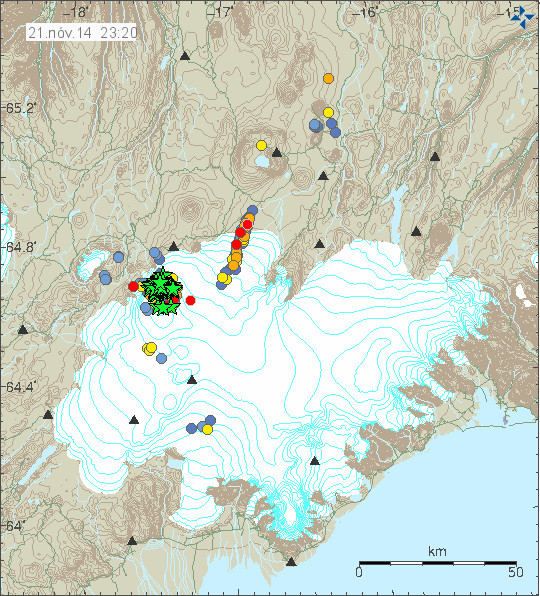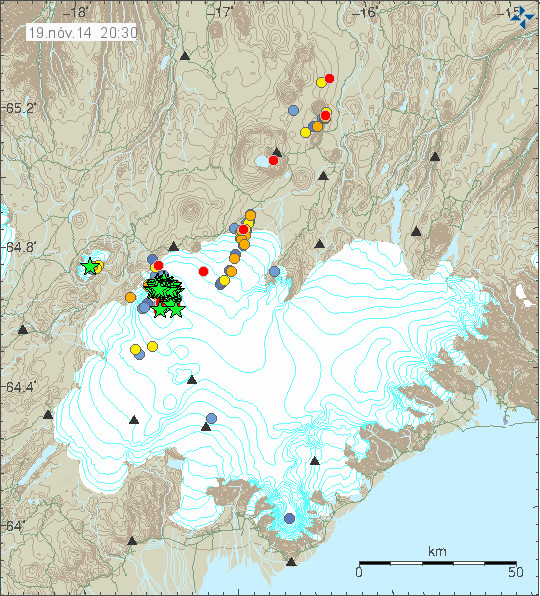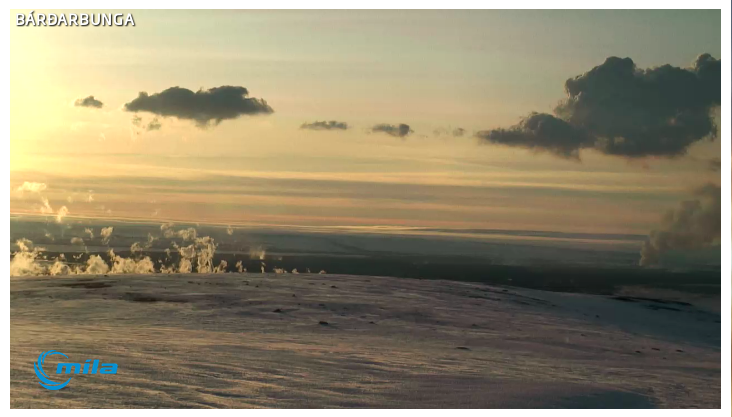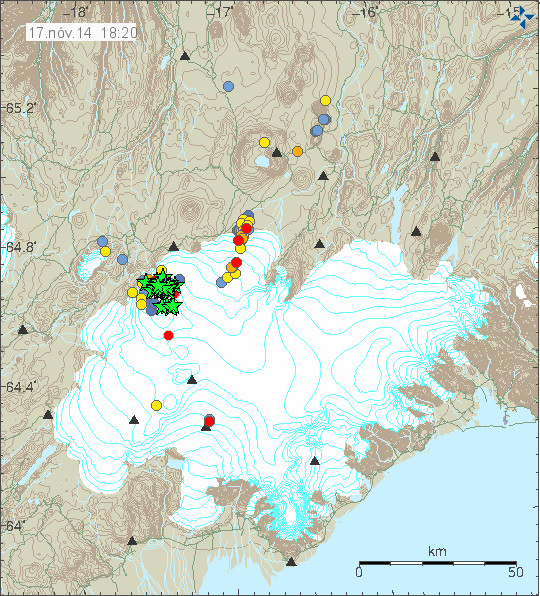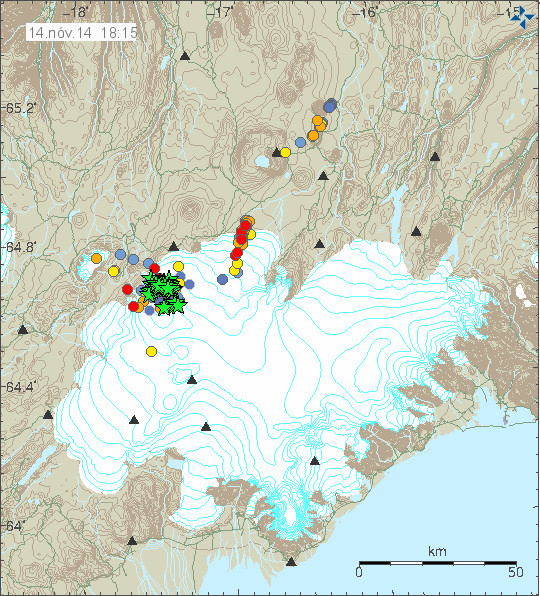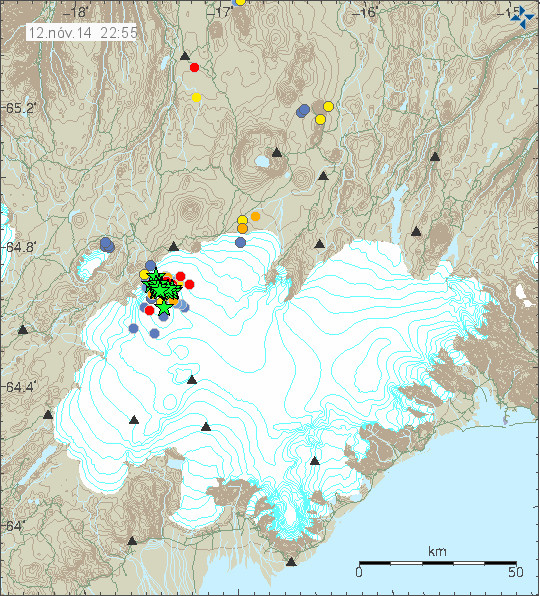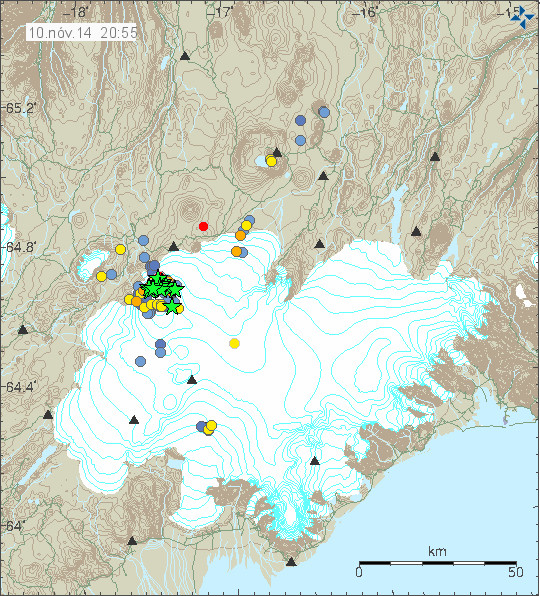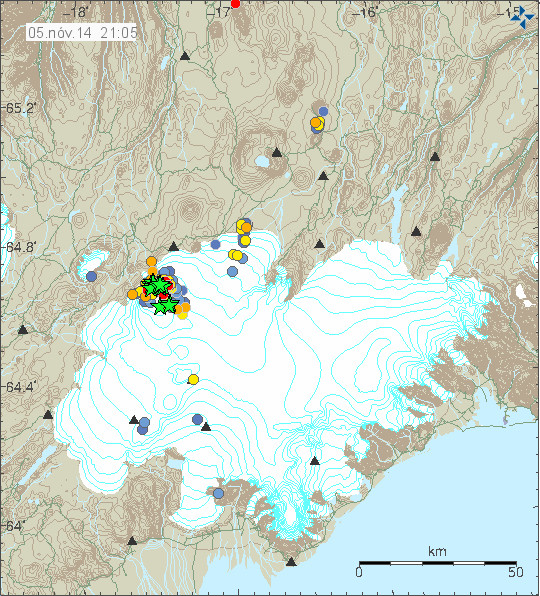This is going to be short update on Bárðarbunga volcano activity.
Activity in Holuhraun continued as before during the weekend. Currently it seems that activity is increasing in Holuhraun eruption, I don’t have it confirmed at the moment. What has been detected is a fluctuation lasting from few seconds and up to several hours in output of lava in Holhraun eruption, this possibly that the eruption is about to end. Since the feeding of the eruption becomes unstable and is unable to feed the eruption in the same stable manner as before. There have also been detected changes in gas output (mostly SO2).
This however does not mean that the dyke is closing up, but the erupting vent in Holuhraun might be doing just that. This means there is a high risk of new vents opening up along the dyke if magma is flowing into the dyke with same force as before. There is also chance that the whole dyke is sealing up and the magma is going to find new paths up the surface once that happens. There might still be months until the eruption in Holuhraun ends, even if the changes have started to take place now. The amount of SO2 suggest that the magma is coming from a deep source of more than 9 km.
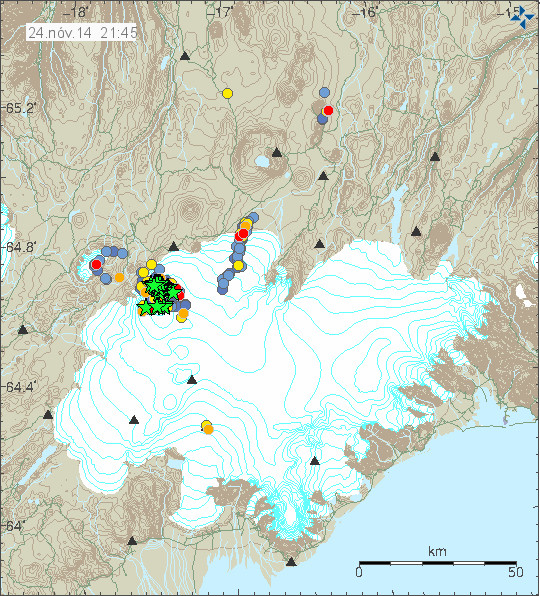
Earthquake activity in Bárðarbunga volcano for the last 48 hours. Copyright of this image belongs to Icelandic Met Office.
Strongest earthquakes during the weekend and today had the magnitudes of 5,1 and 5,4. Earthquake activity drops after large earthquakes and then slowly builds up in matter of hours to days until a new large earthquake takes place. I don’t know why this happens, it just does. New study into Bárðarbunga suggests that magma system of the volcano is far more complex than believed earlier. This study also suggests that the caldera floor is thinner than originally believed. I don’t know what the implication of that are going to be. There is no major change in GPS data around Bárðarbunga volcano. Other than this there is nothing more to report at the moment far as I know.
New video of the Holuhraun eruption
Nýtt myndskeið af umbrotunum í Holuhrauni (Icelandic, Rúv.is, video)
Donations: Please remember to donate to support my work or to use Amazon to buy stuff (when needed). Thanks. 🙂

